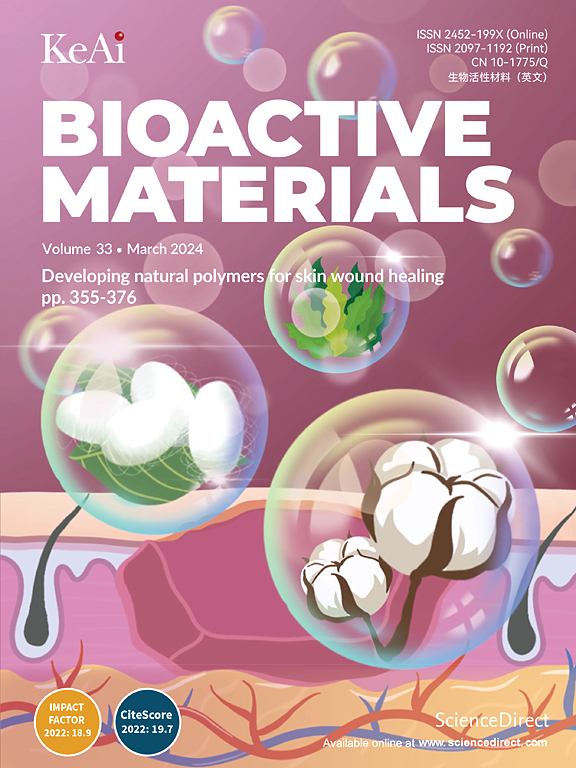MiR-19-loaded oxidative stress-relief microgels with immunomodulatory and regeneration functions to reduce cardiac remodeling after myocardial infarction
IF 18
1区 医学
Q1 ENGINEERING, BIOMEDICAL
引用次数: 0
Abstract
Regeneration therapeutic strategy by microRNAs for boosting cardiomyocyte proliferation in treating myocardial infarction (MI) has the challenges of efficient delivery, and toxicity and risk of sudden death. Herein, oxidative stress-relief microgels were developed for miR-19a/b delivery, modulation of inflammatory tissue microenvironment, promotion of cardiomyocyte proliferation, and maintenance of heart function post MI. The cholesterol-modified miR-19a/b was encapsulated into the cavity of β-cyclodextrin in selenoketal-containing microgels. The microgels could effectively scavenge typical reactive oxygen species (ROS), and down-regulate the intracellular ROS level and the levels of typical inflammatory factors. The microgels could improve the acute inflammatory microenvironment for better cardiomyocyte survival and cellular uptake of miR-19a/b, leading to significant promotion of cardiomyocyte proliferation in vivo. In the rat and minipig models of MI, the microgels most effectively inhibited the acute inflammatory response and reduced the cardiomyocytes apoptosis, resulting in a significant improvement of cardiac function and restriction of pathological remodeling post MI, and thereby best heart function revealed by echocardiography and histological analysis.

求助全文
约1分钟内获得全文
求助全文
来源期刊

Bioactive Materials
Biochemistry, Genetics and Molecular Biology-Biotechnology
CiteScore
28.00
自引率
6.30%
发文量
436
审稿时长
20 days
期刊介绍:
Bioactive Materials is a peer-reviewed research publication that focuses on advancements in bioactive materials. The journal accepts research papers, reviews, and rapid communications in the field of next-generation biomaterials that interact with cells, tissues, and organs in various living organisms.
The primary goal of Bioactive Materials is to promote the science and engineering of biomaterials that exhibit adaptiveness to the biological environment. These materials are specifically designed to stimulate or direct appropriate cell and tissue responses or regulate interactions with microorganisms.
The journal covers a wide range of bioactive materials, including those that are engineered or designed in terms of their physical form (e.g. particulate, fiber), topology (e.g. porosity, surface roughness), or dimensions (ranging from macro to nano-scales). Contributions are sought from the following categories of bioactive materials:
Bioactive metals and alloys
Bioactive inorganics: ceramics, glasses, and carbon-based materials
Bioactive polymers and gels
Bioactive materials derived from natural sources
Bioactive composites
These materials find applications in human and veterinary medicine, such as implants, tissue engineering scaffolds, cell/drug/gene carriers, as well as imaging and sensing devices.
 求助内容:
求助内容: 应助结果提醒方式:
应助结果提醒方式:


